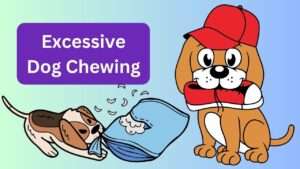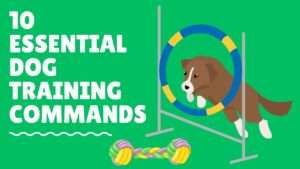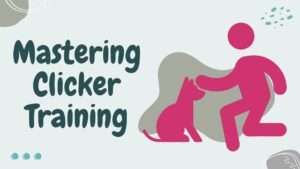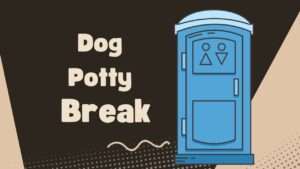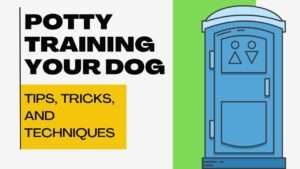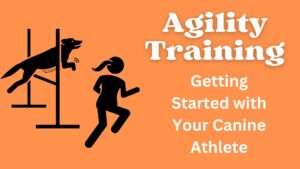Bringing a new furry friend home is an exciting experience, but it comes with responsibilities, one of which is housebreaking your dog.
Whether you have a new puppy or an adult dog, teaching them where and when to do their business is crucial for a harmonious coexistence.
In this ultimate guide, we’ll delve into the art of housebreaking, providing you with comprehensive tips and strategies to make the process smooth and effective.
Contents Overview
Understanding Housebreaking
Housebreaking, also known as potty training, is the process of teaching your dog to eliminate in appropriate places, such as outdoors or in a designated area indoors.
It requires consistency, patience, and positive reinforcement to instill the desired behavior in your furry companion.
Factors Affecting Housebreaking
Several factors influence the success of housebreaking your dog:
A- Age
I- Puppies
Young puppies have limited bladder control and higher metabolism, making them unable to hold their bladder for extended periods.
They may need to be eliminated as frequently as every 30 minutes to an hour, especially after eating, drinking, playing, or waking up from a nap.
II- Adult Dogs
Adult dogs typically have better bladder control and can hold their urine for longer periods compared to puppies.
However, older dogs may still require frequent bathroom breaks, especially if they are not accustomed to a regular elimination schedule.
B- Breed
I- Size
Smaller dog breeds often have smaller bladders and may need more frequent bathroom breaks compared to larger breeds.
II- Temperament
Some breeds are known for being more independent or stubborn, which can affect their willingness to cooperate during housebreaking.
Understanding your dog’s breed tendencies can help tailor your training approach to suit their personality.
C- Routine
Establishing a consistent routine for feeding, bathroom breaks, playtime, and rest helps regulate your dog’s elimination patterns.
Dogs thrive on predictability, so having a structured schedule reinforces desired behaviors and reduces the likelihood of accidents indoors.
Consistency also extends to the designated bathroom area, whether it’s outdoors or indoors. By always taking your dog to the same spot to eliminate, you help reinforce the association between that location and the act of elimination.
D- Environment
I- Distractions
Minimize distractions during bathroom breaks to help your dog focus on the task at hand. Choose a quiet outdoor location away from noisy traffic or other animals, especially during the initial stages of housebreaking.
II- Weather
Extreme weather conditions such as heavy rain, snow, or intense heat may deter your dog from wanting to go outside to eliminate. In such cases, providing indoor alternatives like puppy pads can be helpful temporarily.
III- Access to Outdoors
If you live in an apartment or a house without immediate outdoor access, you’ll need to factor in the time it takes to leash up your dog and take them outside. Planning ensures you can respond promptly to your dog’s bathroom needs.
Understanding these factors allows you to tailor your housebreaking approach to suit your dog’s specific needs and circumstances.
By considering your dog’s age, breed, routine, and environment, you can create a conducive training environment that maximizes success and minimizes accidents.
Housebreaking Techniques
There are several approaches to housebreaking, but the key is to choose a method that aligns with your lifestyle and your dog’s personality. Here are some popular techniques:
A- Crate Training
Crate training is a valuable tool for housebreaking your dog, as it taps into their instinct to seek a den-like environment.
By introducing your dog to a properly sized crate and gradually acclimating them to it with positive associations, you provide a safe and comfortable space where they can rest and avoid soiling.
When used correctly, crate training can aid in regulating your dog’s bathroom schedule and preventing accidents indoors.
I- Introduction to the Crate
Start by introducing your dog to the crate gradually, making it a comfortable and inviting space. Place soft bedding, toys, and treats inside to encourage positive associations.
II- Utilizing the Crate
Use the crate as a tool for managing your dog’s access to the house when you cannot supervise them directly. Dogs instinctively avoid soiling their sleeping area, making the crate an effective way to prevent accidents indoors.
III- Scheduled Bathroom Breaks
Establish a routine for taking your dog outside to eliminate, and use the crate to help regulate their bathroom schedule. Take your dog outside immediately after releasing them from the crate to encourage them to eliminate outdoors.
IV- Avoiding Confinement
While the crate can be a valuable training tool, avoid leaving your dog confined for extended periods, as this can lead to anxiety or discomfort. Use the crate as part of a balanced approach to housebreaking, incorporating regular bathroom breaks and supervised indoor time.
B- Paper Training
Paper training involves designating a specific indoor area, such as puppy pads or newspapers, that your dog can eliminate.
By consistently reinforcing this designated area as the appropriate place to go potty, you can gradually transition your dog to outdoor elimination.
Paper training is particularly useful for situations where outdoor access is limited, providing a temporary solution until your dog can reliably eliminate outside.
I- Designated Elimination Area
Set up a designated area indoors, such as a puppy pad or newspapers, where your dog can be eliminated. Place the designated area in a quiet, easily accessible location.
II- Transitioning to Outdoor Elimination
Gradually move the designated area closer to the door leading outside to help transition your dog to outdoor elimination. This gradual transition helps your dog learn to associate the act of elimination with being outside.
III- Consistent Reinforcement
Praise and reward your dog every time they use the designated area for elimination. Positive reinforcement helps reinforce the desired behavior and encourages your dog to continue using the designated spot.
C- Regular Bathroom Breaks
Regular bathroom breaks are essential for housebreaking your dog, helping them learn where and when to eliminate.
Establishing a consistent schedule for bathroom breaks, including first thing in the morning, after meals, after playtime, and before bedtime, helps regulate your dog’s elimination patterns.
By taking your dog outside frequently and providing opportunities for them to relieve themselves, you reinforce the habit of eliminating in appropriate places and reduce the likelihood of accidents indoors.
I- Establishing a Schedule
Set a consistent schedule for taking your dog outside to eliminate, including first thing in the morning, after meals, after playtime, and before bedtime.
II- Verbal Cues
Use verbal cues such as “go potty” to associate the act of elimination with a command. Consistently using the same cue helps your dog understand what is expected of them during bathroom breaks.
III- Immediate Rewards
Reward your dog immediately after they finish eliminating outdoors with praise, treats, or playtime. Immediate reinforcement helps reinforce the connection between outdoor elimination and positive outcomes.
D- Supervised Indoor Time
Supervised indoor time is vital for housebreaking dogs. By closely watching your dog, especially initially, you can prevent accidents indoors and guide them to appropriate elimination spots. Restricting access to certain areas helps reinforce proper behavior and speeds up the housebreaking process.
I- Close Supervision
Keep a close eye on your dog when they are indoors, especially during the initial stages of housebreaking. Supervision allows you to intervene quickly if you notice any signs that your dog needs to be eliminated.
II- Preventing Accidents
Interrupt any accidents indoors with a firm “no” and immediately take your dog outside to their designated bathroom area. Avoid punishment, as it can create fear and confusion in your dog.
III- Accident Management
Clean up accidents promptly with enzymatic cleaners to remove odors and discourage repeat offenses. Minimizing lingering odors helps prevent your dog from returning to the same spot to eliminate them again.
By understanding these housebreaking techniques and implementing them consistently, you can effectively teach your dog where and when to eliminate them, setting them up for success in their potty training journey.
Each technique offers its unique benefits, so feel free to tailor your approach based on your dog’s preferences, your lifestyle, and your living situation. Remember, patience, consistency, and positive reinforcement are key to successful housebreaking.
Tips for Successful Housebreaking
A- Consistency is Key
I- Stick to a Routine
Establish a consistent schedule for feeding, bathroom breaks, playtime, and rest. Consistency helps your dog learn when and where they are expected to eliminate, reducing the likelihood of accidents indoors.
II- Everyone on Board
Ensure that everyone in the household follows the same housebreaking protocol. Consistency among family members reinforces the desired behaviors and prevents confusion for your dog.
B- Patience and Positive Reinforcement
I- Avoid Punishment
Avoid scolding or punishing your dog for accidents indoors. Punishment can create fear and anxiety in your dog, hindering the housebreaking process. Instead, focus on positive reinforcement to encourage desired behaviors.
II- Use Rewards
Praise, treats, or playtime serve as effective rewards for your dog’s successful elimination outdoors. Immediate reinforcement strengthens the association between outdoor elimination and positive outcomes.
C- Supervision
I- Close Monitoring
Keep a close eye on your dog, especially during the initial stages of housebreaking. Supervision allows you to anticipate your dog’s bathroom needs and intervene before accidents occur.
II- Restricted Access
Limit your dog’s access to areas of the house where accidents are more likely to happen. Consider using baby gates or closing doors to prevent unsupervised access to certain rooms.
D- Accident Management
I- Prompt Cleanup
Clean up accidents indoors promptly using enzymatic cleaners specifically designed to eliminate odors. Thoroughly removing odors discourages your dog from returning to the same spot to eliminate them again.
II- Neutral Response
If you catch your dog in the act of eliminating indoors, interrupt the behavior with a firm “no” and immediately take them outside to their designated bathroom area. Avoid yelling or showing frustration, as this can confuse your dog.
E- Gradual Independence
I- Increased Freedom
As your dog becomes more reliable with housebreaking, gradually increase their freedom indoors under supervision. Monitor their behavior closely and be prepared to intervene if necessary.
II- Unsupervised Time
Avoid leaving your dog unsupervised indoors until they have demonstrated consistent success with housebreaking. Gradually increase their unsupervised time as they become more reliable.
F- Routine Vet Check-ups
I- Health Considerations
Ensure that your dog’s housebreaking difficulties are not caused by underlying health issues. Schedule regular veterinary check-ups to address any medical concerns that may affect their bathroom habits.
G- Adapt to Your Dog’s Needs
I- Tailored Approach
Every dog is unique, so be prepared to adapt your housebreaking approach based on your dog’s age, breed, personality, and individual preferences. Experiment with different techniques to find what works best for your furry companion.
By implementing these additional tips and strategies, you can enhance the effectiveness of your housebreaking efforts and set your dog up for success in learning where and when to eliminate.
Remember to remain patient, consistent, and positive throughout the process, and celebrate each milestone achieved in your dog’s potty training journey.
Housebreaking Your Dog - Step By Step Approach
1- Establish a Routine
Consistency is key when housebreaking your dog. Establish a regular schedule for feeding, potty breaks, and outdoor walks. Puppies typically need to be eliminated shortly after eating, drinking, playing, or waking up from a nap.
2- Choose a Potty Spot
Designate a specific area outside where you want your dog to eliminate. Take them to this spot consistently, using a verbal cue like “go potty” to encourage them to do their business.
3- Supervise Diligently
Keep a close eye on your dog, especially during the early stages of housebreaking. Watch for signs that they need to go, such as sniffing, circling, or squatting. When you observe these behaviors, promptly take them outside to their designated potty spot.
4- Use Positive Reinforcement
Praise and reward your dog immediately after they are eliminated in the appropriate spot. Use treats, verbal praise, and affection to reinforce the desired behavior. Positive reinforcement helps your dog associate going potty outside with good things.
5- Establish a Potty Cue
Teach your dog a specific cue, such as ringing a bell or scratching at the door, to signal when they need to go outside. Consistently responding to this cue reinforces communication between you and your dog.
6- Clean Accidents Promptly
Accidents are bound to happen during the housebreaking process. When they do occur, clean up accidents thoroughly with an enzymatic cleaner to remove lingering odors that may attract your dog back to the same spot.
7- Avoid Punishment
Never scold or punish your dog for accidents indoors. Punishment can create fear and anxiety, making housebreaking more challenging. Instead, focus on positive reinforcement and redirecting your dog’s behavior to the appropriate potty spot.
8- Utilize Crate Training
Crates can be valuable tools for housebreaking by preventing accidents when you’re unable to supervise your dog closely. Make sure the crate is appropriately sized and comfortable for your dog, and gradually increase the duration of confinement as they become accustomed to it.
9- Be Patient and Persistent
Housebreaking takes time and patience, especially with puppies. Stay consistent with your training efforts and remain patient through setbacks. With time and perseverance, your dog will learn to reliably eliminate outside.
10- Seek Professional Help if Needed
If you’re struggling with housebreaking despite your best efforts, don’t hesitate to seek guidance from a professional dog trainer or behaviorist. They can provide personalized advice and support to address any challenges you may encounter.
Bottom Line
Remember, every dog is unique, and the housebreaking process may vary based on factors such as age, breed, and individual temperament.
Stay positive, stay consistent, and celebrate each success along the way. With dedication and persistence, you’ll soon enjoy the peace of mind that comes with a reliably housebroken dog.
Happy training!

Meet Colleen Campbell, the dedicated Owner and Trainer of Positive Interactions Dog Behavior and Training, LLC. With over three decades of experience in research at Dow Chemical, Colleen brings a wealth of knowledge and a scientific approach to her dog training business.



